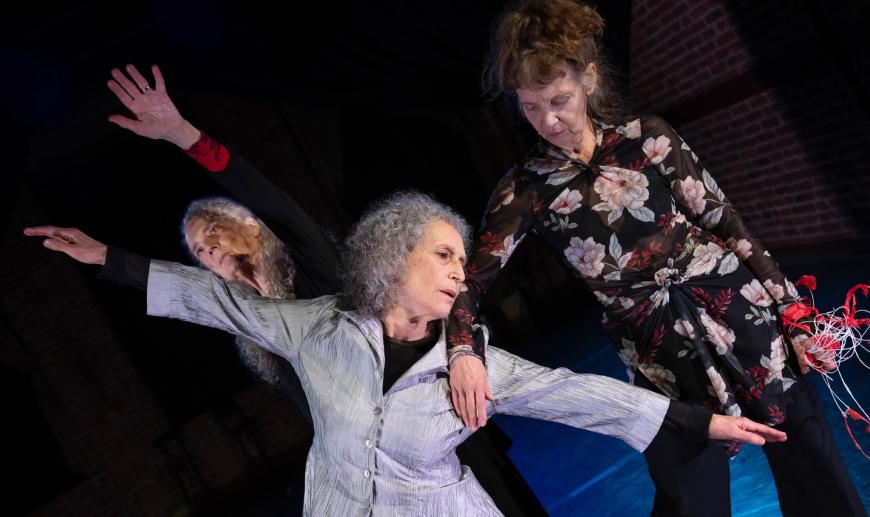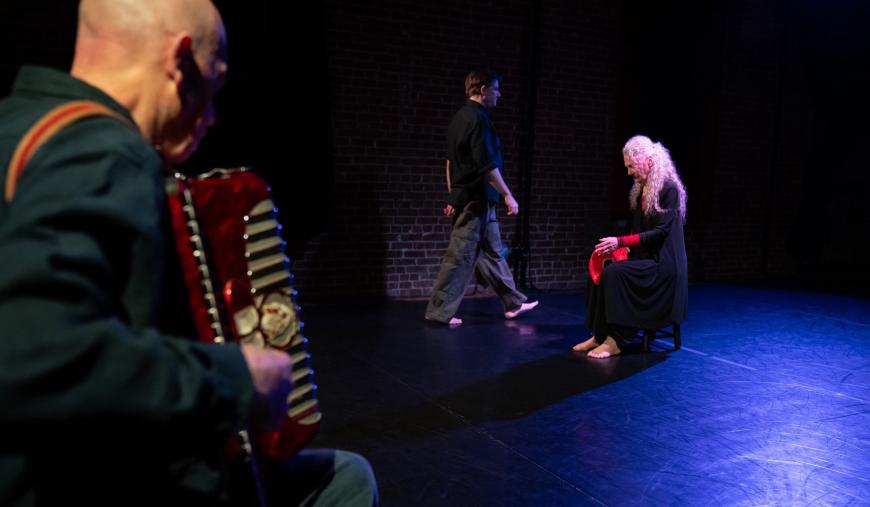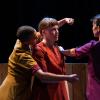
Sometimes, a conversation between two artists grows into something much bigger. This has been the case with Unstill Life, an evening-length work presented by the Margaret Jenkins Dance Company (MJDC) that premiered in New York City earlier this month and opens on the West Coast on March 21 at Oakland’s Dresher Ensemble Studio.
The production brings together a provocative collaborative team of internationally recognized artists. Unstill Life’s original duo, choreographers Risa Jaroslow and Vicky Shick, are joined by MJDC Artistic Director Margaret Jenkins, composer and performer Rinde Eckert, and Jon Kinzel, whose work encompasses multiple disciplines, from sound design to visual art to choreography, singing, and composition.
“Fundamental but not absolutely necessary is the premise that we are all older artists with vast experiences we bring to the work,” says Jenkins in a phone interview from New York. “Jon is in his late 50s, and the rest of us are in our 70s, and I’m 81. We’ve all been investigating our own bodies for a long time. What can the body do at this time that feels authentic as we confront, in a hopeful way, what it means to be at this stage in our lives? What does a body know? It carries lots of stories, and how can we share those stories with one another in the making of the work and then with the audience?”

Jenkins says she is far more interested in learning from audiences and individuals through a piece than in dictating what that journey should be. She’s also determined not to define a narrative arc and, as a result, won’t trap Unstill Life with words and phrases that might preempt its “morph-ability.” The most she will say is that, over 40 minutes, the work bridges “duets, solos, group interactions, and every combination you can have among five people.”
The challenge, Jenkins says, was to remain vulnerable. When she collaborates with her company, she ultimately makes the final decisions. But “in this instance, there are five of us weighing in on every moment. Each one of us comes from not a dramatically different frame but varying perspectives on aesthetics, what’s important, and [whether] a tangible narrative [is interesting] or not. It’s been fascinating.”
Kinzel says the score for Unstill Life features found sounds, vocalization, and influences from the digital realm we all live in. The idea of making something from nothing is at the soundtrack’s core. “That extends to working with live sound and, specifically, what the body can do alone, such as with the human voice and percussion with the hands. I knew not to underestimate that [foundation] as the ground but also [sought to] use my experiences as a trained singer [and] piano and brass player, although I’ve stopped playing those instruments in my regular practice. It wasn’t about working with anything thematic.”

Kinzel has reverence for how sound shapes what is seen or not seen. Even visceral, visual forms of art cause him to think of sound, which can include silence. He says working to establish common aesthetics with Eckert, whom he has not known long, was a fluid, rather than arduous, process.
Kinzel has used text sparingly in his own work, and exploring the meaning-making ability of language with his collaborators was surprisingly interesting for him. He’s not yet sure of its acuity in Unstill Life, but he is certain that the way text is used is not derivative, didactic, or opaque. “It’s an opening rather than a passage, so I completely welcome its usage. People like Rinde and Margy have been working with it for decades, so that’s been a good meeting place.”
Collaborations have their challenges, and at the most basic level, in a project involving movement and sound, it’s bodies sweating out the unfamiliar patches in a studio. “Collaborations are never easy,” Kinzel says, “but the best are, and this process has been led by desire. We have strong spines and thick skins, so there’s a nice understanding of [how we can] oscillate between emotional and intellectual responses. How much are we trying new terrain? How much are we engaging with each other? For that, we remained vulnerable, and that’s been lovely.”



